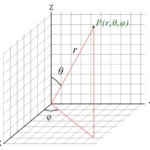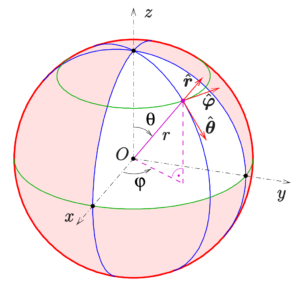How to find the average rate of change is what we are going to learn in this article. Get steps to do the calculation. Along with the process of calculating the average rate we have also given some solved examples for better understanding.
How to find average rate of change
The average rate of change represents the ratio of the change in a dependent variable to the change in an independent variable over a given interval. In physics, it is often used to describe the average velocity or acceleration of an object during a specific time period.
Finding the average rate of change
The average rate of change can be easily calculated by following the steps given below:
- Identify the variables:
First, determine which variables you’re working with. In most physics problems, the dependent variable is position, velocity, or acceleration, while the independent variable is typically time. Let’s represent the dependent variable with ‘y’ and the independent variable with ‘x.’ - Choose the interval:
Choose the time interval for which you want to find the average rate of change. You’ll need the starting point (x1, y1) and the endpoint (x2, y2) of the interval. - Calculate the change in the dependent variable:
Find the difference between the dependent variable’s values at the endpoint and the starting point. This can be expressed as:
$\Delta y=y_2-y_1$ - Calculate the change in the independent variable:
Find the difference between the independent variable’s values at the endpoint and the starting point. This can be expressed as:
$\Delta x=x_2-x_1$ - Determine the average rate of change:
Divide the change in the dependent variable by the change in the independent variable to find the average rate of change. This can be expressed as:
Average Rate of Change $=\frac{\Delta y}{\Delta x}$
It is important to remember that when you’re dealing with a specific physics problem, the variables and their respective symbols may be different.
For example, if you’re finding the average velocity of an object, the dependent variable is displacement $(\Delta s)$, and the independent variable is time $(\Delta t)$. In that case, the average velocity $(v_{avg})$ is calculated as:
$v_{avg} = \frac{\Delta s}{\Delta t}$
Similarly, for average acceleration, the dependent variable is the change in velocity $(\Delta v)$, and the independent variable is time $(\Delta t)$. The average acceleration $(a_{avg})$ is calculated as:
$a_{avg} = \frac{\Delta v}{\Delta t}$
By following these steps, you can find the average rate of change for various physics problems.
Solved Examples
Let us look at some solved examples to have a deeper look at the concept of the average rate of change.
Example 1: Average Velocity
Suppose a car is moving along a straight path (Rectilinear Motion). The car’s position $s$ with respect to time $t$ can be represented by the function $s(t) = 2t^2 + 3t$, where $s$ is measured in meters and $t$ in seconds. Let’s find the average velocity of the car between $t = 2$ seconds and $t = 5$ seconds.
- Identify the variables:
Here, the dependent variable is the position $s$, and the independent variable is time $t$. - Choose the interval:
We’re given the interval as $t = 2$ seconds ($x_1$) and $t = 5$ seconds ($x_2$). - Calculate the position values at the endpoints:
Use the position function $s(t)$ to find the values of $s$ at $t = 2$ and $t = 5$:
$s(2) = 2(2^2) + 3(2) = 16$
$s(5) = 2(5^2) + 3(5) = 65$ - Calculate the change in position ($\Delta s$) and time ($\Delta t$):
$\Delta s = s(5) – s(2) = 65 – 16 = 49$ meters
$\Delta t = 5 – 2 = 3$ seconds - Determine the average velocity ($v_\text{avg}$):
$v_\text{avg} = \frac{\Delta s}{\Delta t} = \frac{49}{3} \approx 16.33$ m/s
The average velocity of the car between $t = 2$ seconds and $t = 5$ seconds is approximately $16.33$ m/s.
Example 2: Average Acceleration
Let’s say the velocity $v$ of an object is given by the function $v(t) = 3t^2 – 2t + 1$, where $v$ is measured in meters per second (m/s) and $t$ in seconds. Find the average acceleration between $t = 1$ second and $t = 4$ seconds.
- Identify the variables:
In this case, the dependent variable is the velocity $v$, and the independent variable is time $t$. - Choose the interval:
We’re given the interval as $t = 1$ second ($x_1$) and $t = 4$ seconds ($x_2$). - Calculate the velocity values at the endpoints:
Use the velocity function $v(t)$ to find the values of $v$ at $t = 1$ and $t = 4$:
$v(1) = 3(1^2) – 2(1) + 1 = 2$
$v(4) = 3(4^2) – 2(4) + 1 = 41$ - Calculate the change in velocity ($\Delta v$) and time ($\Delta t$):
$\Delta v = v(4) – v(1) = 41 – 2 = 39$ m/s
$\Delta t = 4 – 1 = 3$ seconds - Determine the average acceleration ($a_\text{avg}$):
$a_\text{avg} = \frac{\Delta v}{\Delta t} = \frac{39}{3} = 13$ m/s$^2$
The average acceleration of the object between $t = 1$ second and $t = 4$ seconds is $13$ m/s$^2$.
By working through these examples, you can see how the process of finding the average rate of change can be applied to different physics scenarios. Remember, the average rate of change is useful for understanding the general behaviour of a system over a specified interval, but it may not reflect the instantaneous changes occurring within that interval.



